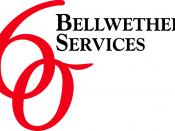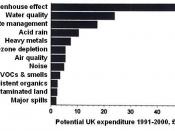1.0 Introduction
This paper explores and analyses the external environment in which the 'Central Building Society' has operated. Outlining the key influences on the society's choice of strategy, it further proposes a strategy blueprint for the future.
It is assumed that the audience is familiar with the 'Central Building Society' Case Study material (ECCH Collection) and business policy and management theory.
2.0 The Environment
A critical factor in the development of strategy is in the analysis and appreciation of both the internal and external environment in which the firm operates.
This analysis of the Central Building Society is focused on the external macro-environment, and as such an internal analysis (e.g. resources, culture etc) is outside of this scope.
2.1 External Analysis
The variables that comprise the 'external environment' form the context in which an organisation exists, consisting of everything classified as outside the organisation, directly or indirectly impacting upon the business.
It is useful to distinguish two features of the external environment: the broad environment, constituting the general environmental influences with which all firms must contend, and the competitive environment; the specific features of the industry environment.
2.2 STEP Analysis
Broad environmental factors include a number of general forces, which are examined in the form of a STEP analysis:
Note: Factors tend to inter-relate. Reference: Appendix 2 - SWOT matrix.
*Socio-Cultural Forces
1)Customer awareness of alternatives
2)Customer loyalty
3)Population demographics
4)Levels of education
5)Demographic Forces
6)Age structure of population changing
*Technological factors
1)Improved communication
2)Growth of ATMs
3)New complimentary technologies (e.g. Internet banking, phone banking)
4)Electronic funds transfers
5)Paying in machines
6)Increased use of 'plastic' (credit cards etc)
*Economic Forces
1)Expanded branch network to two counties + branch in London
2)Sharp fall in nominal inflation & house prices
3)Stage of economic cycle (booming/busting)
4)1990's lower inflation & lower...


